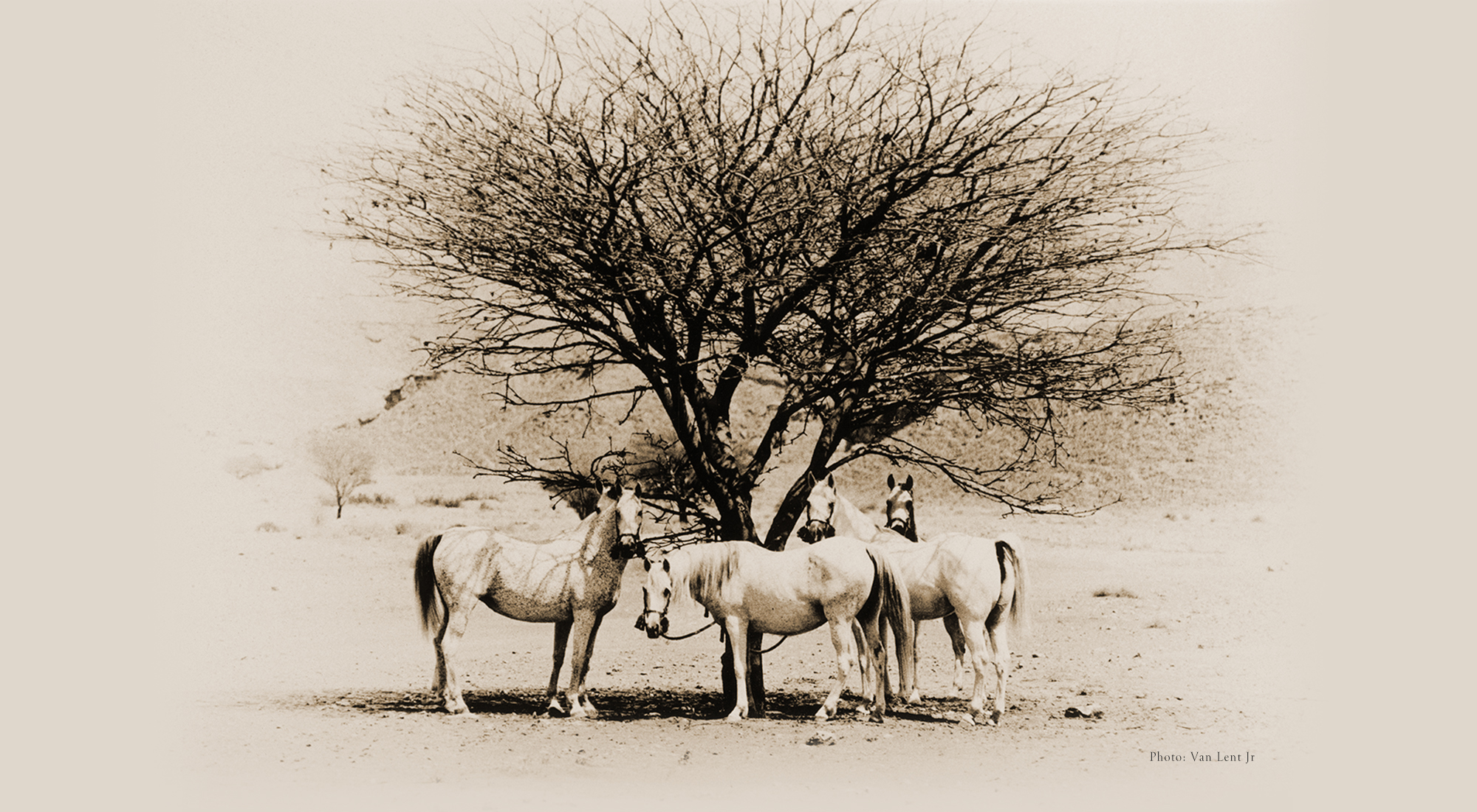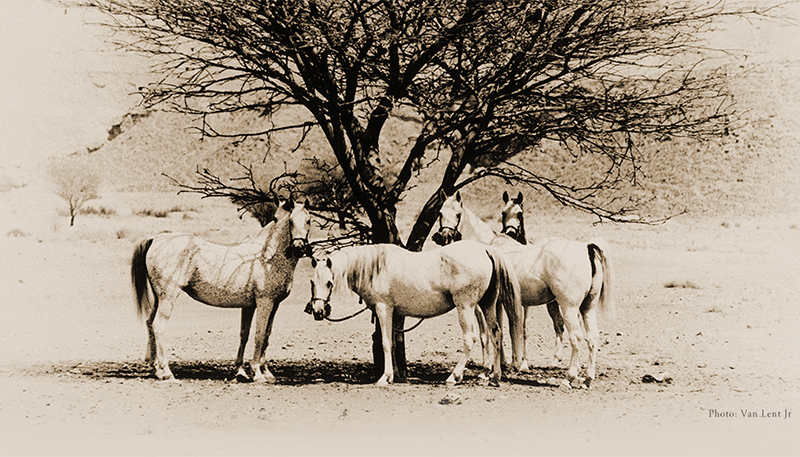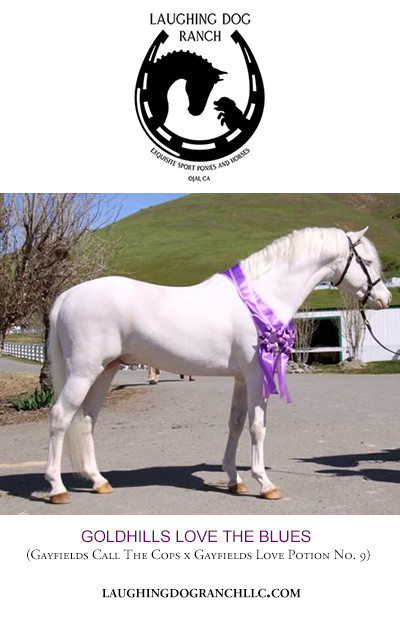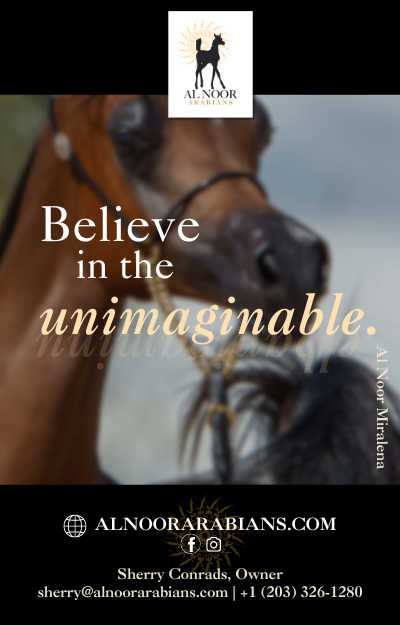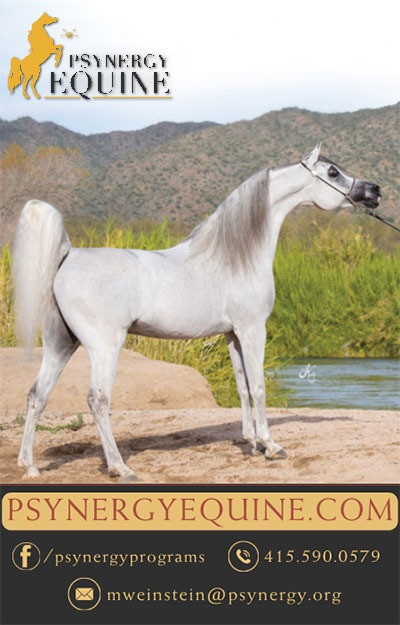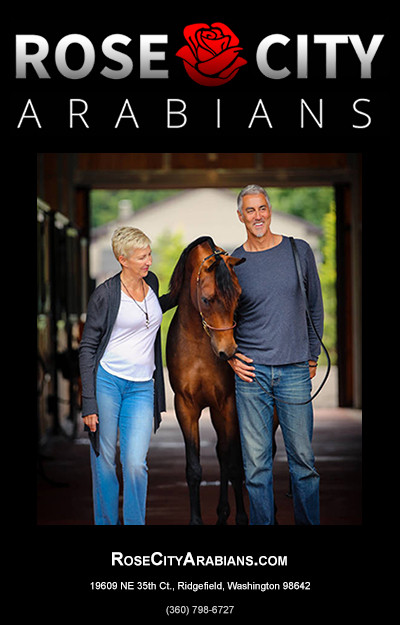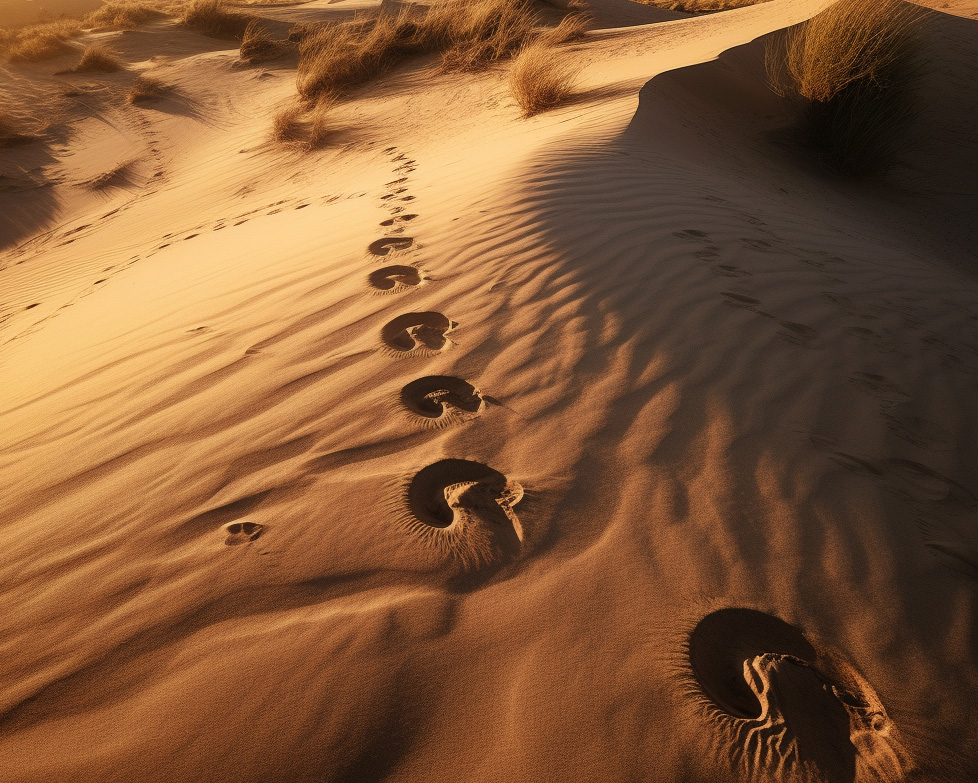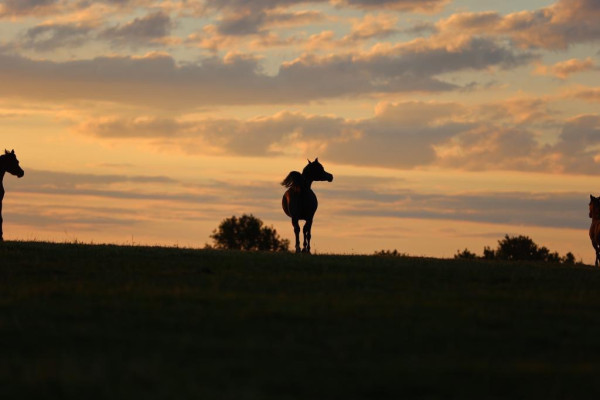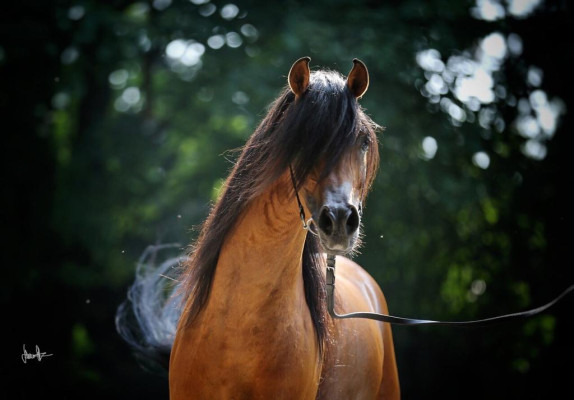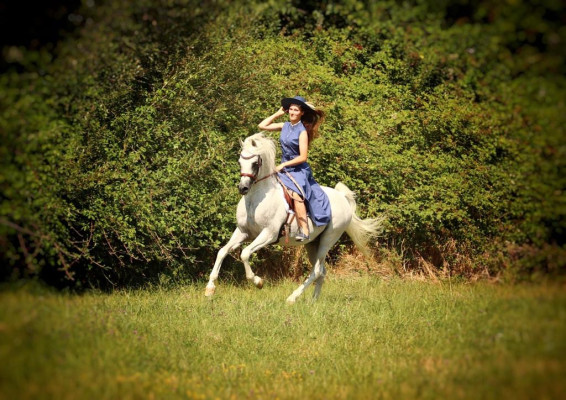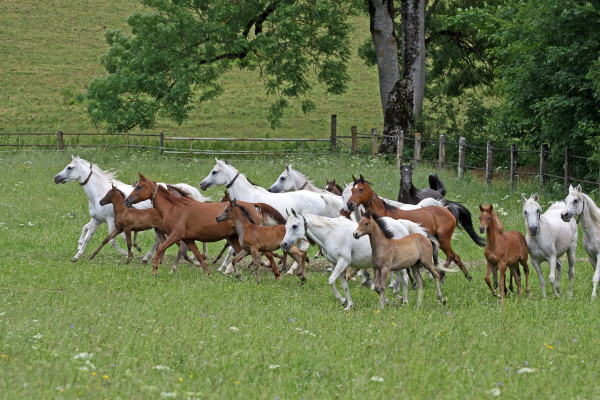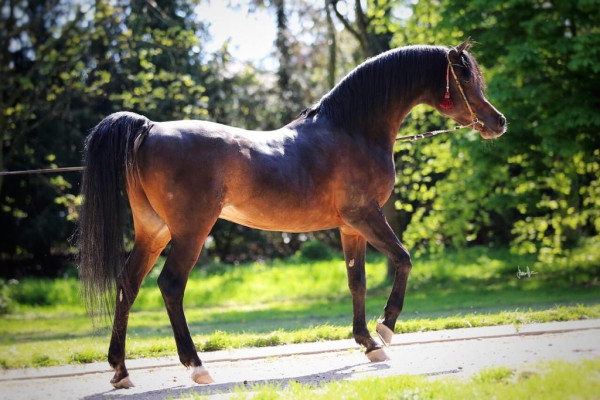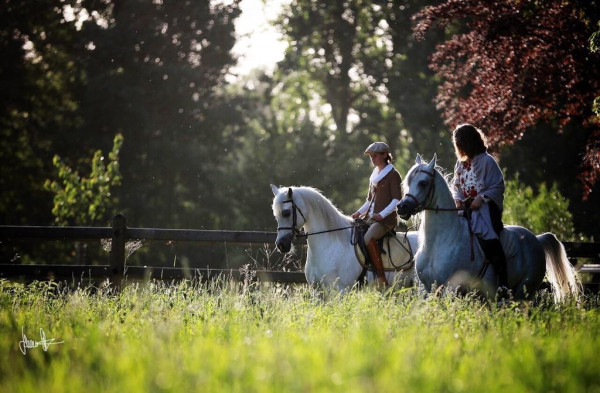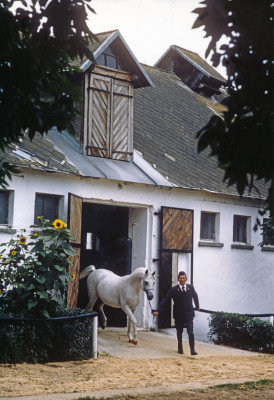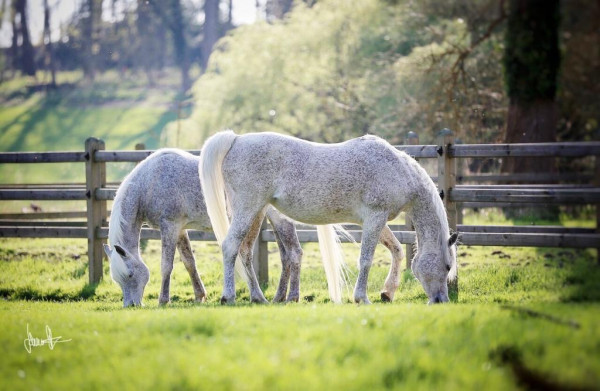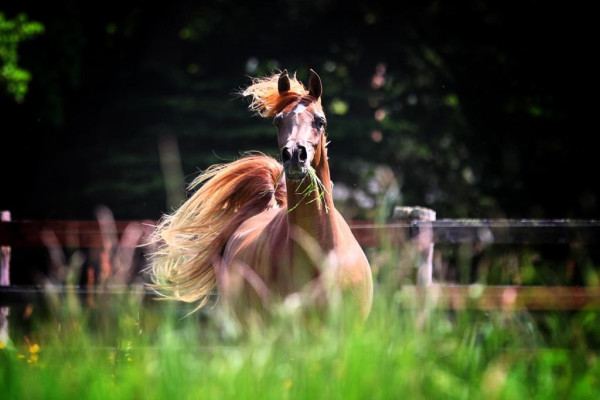A Visit with Stuart Vesty
by Denise Hearst
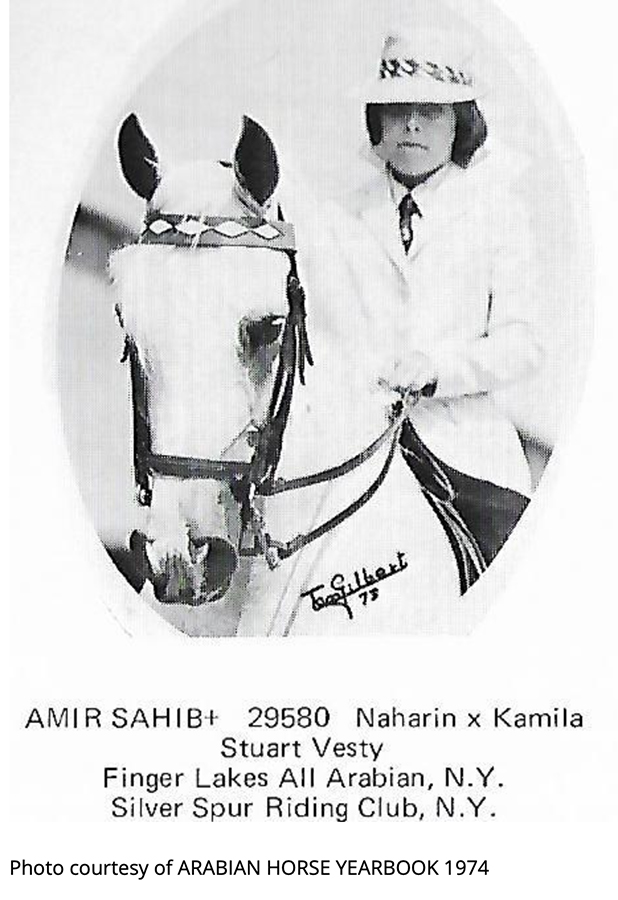 As Stuart Vesty explains it, “Horses have been in my life forever, so I don’t know what life would be like without them. My mother grew up showing a Saddlebred gelding on the local Upstate New York circuit, but gave that up to raise a family. I’m the youngest of four boys and my mom wanted us to experience what she had as a child, so a couple of ponies were added to the family. Then my grandfather purchased a Half-Arabian mare for us, followed by an Arabian gelding named Amir Sahib (Naharin x Kamila) a couple years later. All four of us showed that gelding at local and 4-H shows in every class available – showmanship, English, western, park, costume – sometimes in 17 classes in a day! My mother would occasionally buy photos from the show photographer and some of them were so bad I once said (at the age of about 12) “This guy is making money doing this? I could do better and I have no idea what I’m doing!
As Stuart Vesty explains it, “Horses have been in my life forever, so I don’t know what life would be like without them. My mother grew up showing a Saddlebred gelding on the local Upstate New York circuit, but gave that up to raise a family. I’m the youngest of four boys and my mom wanted us to experience what she had as a child, so a couple of ponies were added to the family. Then my grandfather purchased a Half-Arabian mare for us, followed by an Arabian gelding named Amir Sahib (Naharin x Kamila) a couple years later. All four of us showed that gelding at local and 4-H shows in every class available – showmanship, English, western, park, costume – sometimes in 17 classes in a day! My mother would occasionally buy photos from the show photographer and some of them were so bad I once said (at the age of about 12) “This guy is making money doing this? I could do better and I have no idea what I’m doing!
“When I graduated high school I decided to go to Rochester Institute of Technology to study photography. It was the best photography school in the country and it was 20 minutes from home. After two years of learning the history, aesthetics, materials and processing of photographs, I needed to focus on a specific aspect of photography in my third year. My professor asked me what I was most interested in – photo journalism? Fashion? Studio? I replied that I wanted to be a horse photographer. He said 'If you think you can make a living as a horse photographer, you better think again.' I said, “Thanks, I won’t be coming back next year.”
When Stuart and I spoke he was rushing off to Tulsa to compete in the U.S. Nationals – a well-rounded horseman on either side of the lens. He graciously made time to tell us some stories about his decades following the Arabian horse around the world.
How would you describe your photo style? What makes a Stuart Vesty photo distinct? Are there certain aspects of the Arabian horse that you strive to capture in your photography? And how does being a successful amateur competitor inform your “eye.”
I guess you could say my style is genuine. I consider myself as much a horseman as I do a photographer, so I understand my subject well and can anticipate what might happen before it does. It’s impossible to capture a photo after you see it, so it’s advantageous to know what might happen. Other than the location for the shoot, I very rarely have a “plan” before a session. I like to see things unfold and then make adjustments once I get a feel for what’s happening. Regardless of whether the goal of a photo session is to document a horse for sale or for the cover of a magazine, I hope to capture the horse’s personality and expression so the viewer feels as if they are there.
What is it about the Arabian breed that attracts you as subject? Tell us about the one horse you've photographed who has come closest to your ideal of the Arabian horse. Your favorite horse to photograph?
Arabians are considered “The Proud Breed” for a reason. Their expression, enthusiasm and refinement make an exciting photo that much easier to capture. I’ve photographed so many great horses it’s hard to say who was my favorite, but very early in my career I had the opportunity to photograph *Padron (Patron x Odessa) and he was one of the most charismatic horses I’ve known. He was beautiful and he knew it.
Is having a “connection” with the horses you photograph important? If so, give us an example of how this has translated during a photo shoot, and in the final result?
I think that rolls back to being a horseman. It’s important to know the subject you’re photographing. Having a personal connection with a specific horse certainly eliminates time wasted on trying things that the horse has no interest in. Equally important is having a connection with the other humans involved in the session. The handler/rider and the "behind the scenes” people are crucial. It’s nearly impossible to capture certain types of photos without some assistance.
Share some of the tricks you use if things aren’t going smoothly on a photo shoot. Tell us about an instance where things didn’t go as planned but the result was even better than you’d hoped.
Hmmm, I don’t know if there are any tricks. There are plenty of frustrating times that will ultimately smooth themselves out with patience, and sometimes it’s just best to call it quits and try again later.
He said, “If you think you can make a living as a horse photographer, you better think again.”
During one of my many sessions in Poland photographing horses for their annual sale catalog, we needed some miscellaneous “stuff” photos for the design. We had the photos we needed for the individual mares, so I thought it would be nice to take six or seven grey mares (all had foals at their side) and put them on one side of a hedge with their babies on the other side of the hedge behind me. In my mind it would be fantastic. On cue, the handlers would remove the halters and duck behind the hedge and all the mare’s ears would perk up and look to their foals. Beautiful!! Well, that is exactly what DIDN’T happen. One mare decided that the mare next to her was responsible for this terrible idea and proceeded to attack her, and the drama grew. That serene photo of several beautiful mares I had hoped for was replaced with a very pissed off mare ready to attack. I named that photo “DOMINANCE.” It is one of my favorites.
What photographers (equine or not) have you admired over the years? What have you learned from them and in what ways does their influence show up in your work?
I have always admired Jerry Sparagowski and Scott Trees. In my mind Jerry was technically perfect in his methods. There was always a balance and expression in every horse that made me think there’s no way anyone could get a better photo of this horse. Scott, on the other hand, added a more artistic “outside the box” style that told a story and brought out a horse’s personality. I think I naturally see and feel both of those styles, so it was easy to relate to their photos. Several years ago a client gave me a book by Yann Arthus-Bertrand titled “Good Breeding.” It’s filled with amazing photos of barnyard livestock photographed in front of a fabric backdrop. I get bored easily so I decided to incorporate this into some of my work. I haven’t reached the same level of excellence, but it’s a fun concept to throw in the mix every now and then.
What subjects other than Arabian horses do you enjoy photographing?
I really enjoy good horses of any breed doing what they do best. Thoroughbred racehorses,Saddlebred show horses and Quarter Horse reiners and cutters excite me. There is an energy that is hard to deny when anything is performing at its highest level, whether it’s human or animal.
I love wildlife in general and have travelled to South Africa and Australia on several occasions where the wildlife is completely different from here in the U.S. When my work is completed I occasionally take a day or two to sightsee and be a tourist. I’ve only spent three days on safari in South Africa, but in that limited time have seen so many amazing animals. I have yet to see a cheetah in the wild, or a kill in progress. These are still on my bucket list.
What are your general views on the integrity of a photo after it’s been taken? Where do you draw the line between enhancing a photo and reconstructing it?
I wrote an article several years ago on this topic and I started by saying “the only thing I can take with me when I die is my integrity.” With the advancement in technology in recent years and the fact that everyone has a fairly good camera in their back pocket, being a photographer of the truth can be frustrating. During sessions I constantly hear, “You can just photoshop that out, right?” Usually they’re referring to something distracting in the background, but it’s gone WAY beyond that with some photographers.
That serene photo of several beautiful mares I had hoped for was replaced with a very pissed off mare ready to attack.
For the most part my photography involves the Arabian horse industry as a business, and not as an art form. When a photograph’s intent is for marketing purposes, either a horse for sale, a stallion at stud or a show horse being promoted for an event, the job of a photographer is to present an authentic representation of that individual. Fraud is a crime in business and the alteration of a horse’s conformation should be considered as such.. There are some owners and trainers who request these alterations, but more often the photographer initiates the retouching in hopes of pleasing their client with an amazing photo. Regardless of where it originates, it’s wrong and shouldn’t be tolerated. I believe it’s ok to use the available technology to “save” a great shot that would be otherwise lost, but the end result must be a true representation of that horse at that time. The truth will do.
What’s the funniest or most memorable experience you’ve had on a photo shoot?
There have been so many, but the first one that comes to mind fits both. We took a mare to the beach in Southern California, and after several minutes hoping she would relax with all the waves rushing in, she stood up with the Pacific Ocean in the background and looked beautiful. The handler said “Stu, she looks great from this angle.” I said, “I’m sure she does, but she looks great from this angle too.” Then he said “No, she looks REALLY great from this angle.” So I walked over to see what he was seeing. Just over her back, up against the cliffs was a couple having sex. They were completely oblivious to everything around them, as they should be, I suppose! Since neither of us was disturbing the other, we just continued with the session. Sorry, no photos to display here :)
Are there any locations/subjects you haven’t photographed that you’d like to tackle in the future? If so, what are they and why do they make your most wanted list?
I’d love to go on a cattle drive for the whole experience as well as the photo opportunities. It just seems like an amazing way to spend time with horses and like-minded people. The campfires, the stories, being “off grid" … the whole thing is appealing to me. An African safari on horseback also sounds like an incredible adventure, galloping along with the zebras and giraffes and hoping to not be eaten by lions or a pack of hyenas!
In your experience of owning and photographing Arabians, what are a couple of the most outstanding events? Explain, in your soulful words, what the Arabian horse means to you.
I have bred a few horses that have been National Champions. When something you had a hand in creating reaches that level, it is a thrill that can’t be explained. I don’t have children, so maybe I put those parental emotions into my horses. I give them every opportunity to develop into their potential. Some don’t, and that’s ok, but they tend to find their way into homes that will love them, and that makes me happy.
Fraud is a crime in business, and the alteration of a horse’s conformation should be considered as such.The truth will do.
In April I lost my wife, Rebecca, to breast cancer. It was a fierce battle that she fought with grace and hope. The medicine that I am convinced was the most effective in her treatment was our horses. Regardless of how she felt from the chemo or any other treatment, after spending time with our horses she was better, both emotionally as well as physically. In December of last year she went to the emergency room with some severe side effects from a treatment and remained in bed for several days after. None of that would keep her in bed when, in two days, she needed to get on a plane and show our mare Olivia Pope (Come To Poppa x Natalie D) for the first time. They were brilliant together, won their class and went on to be named Champion a couple days later. The smile on Rebecca’s face when she exited the arena is burned into my mind and is a complete reflection of how much love and joy she had to give. It was her Arabian stallion Apaladin that introduced us to each other nearly 25 years ago, and it was our enduring love of the Arabian horse that set the stage for our relationship later. I honestly owe my life of adventure and travel, and our most incredibly wonderful marriage to the Arabian horse, and to our Lord who created them.
Just prior to Rebecca’s passing she requested that her gelding, Appletini (a son of Apaladin), be given to the Arabian Riding Academy in Santa Ynez, California, so that more children could experience what she felt whenever she was with him. He has surpassed all our expectations, and I have no doubt that Rebecca knew he would excel at his new job. She was right, and knowing the impact her last request is having on kids, I find peace in seeing her spirit and light continue to shine.
I owe my life of adventure and travel, and our most incredibly wonderful marriage to the Arabian horse, and to our Lord who created them.
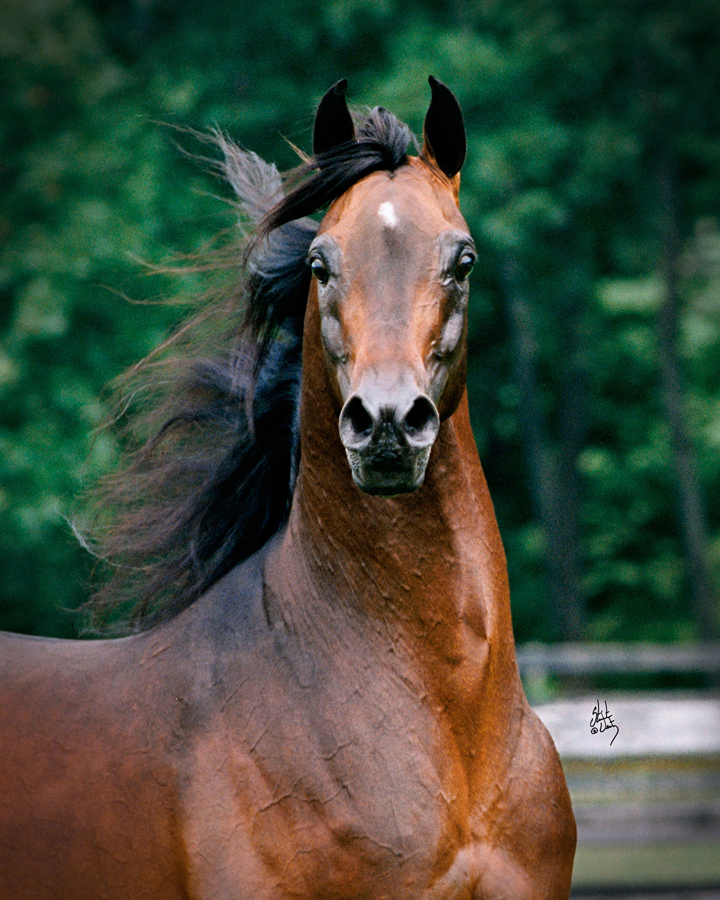 *El Ghazi (*Aloes x Elektra), Kentucky, USA
*El Ghazi (*Aloes x Elektra), Kentucky, USA
This photo ranks up there with one of my all-time favorites for several reasons. I loved this horse prior to ever photographing him, but when I had the opportunity, he didn’t disappoint. I had just moved to Kentucky and was hired to shoot a few stallions for Lasma East. It was a pretty dark day and just after we turned *El Ghazi loose it started to drizzle. We had to work fast as I didn’t know how wet we were going to get. Ghazi was brilliant and made my job easy. Rather than having to run around a field to get the right angle, he just trotted back and forth in front of me turning his head my way each time. This was in the days of film, so I could only hope that I had recorded what I thought I saw. I wasn’t disappointed, and this photo has become his signature photo. I very rarely enter photo contests, but I did with this one, and received an Honorable Mention award in an international photo contest with over 6,000 entries from 69 countries!
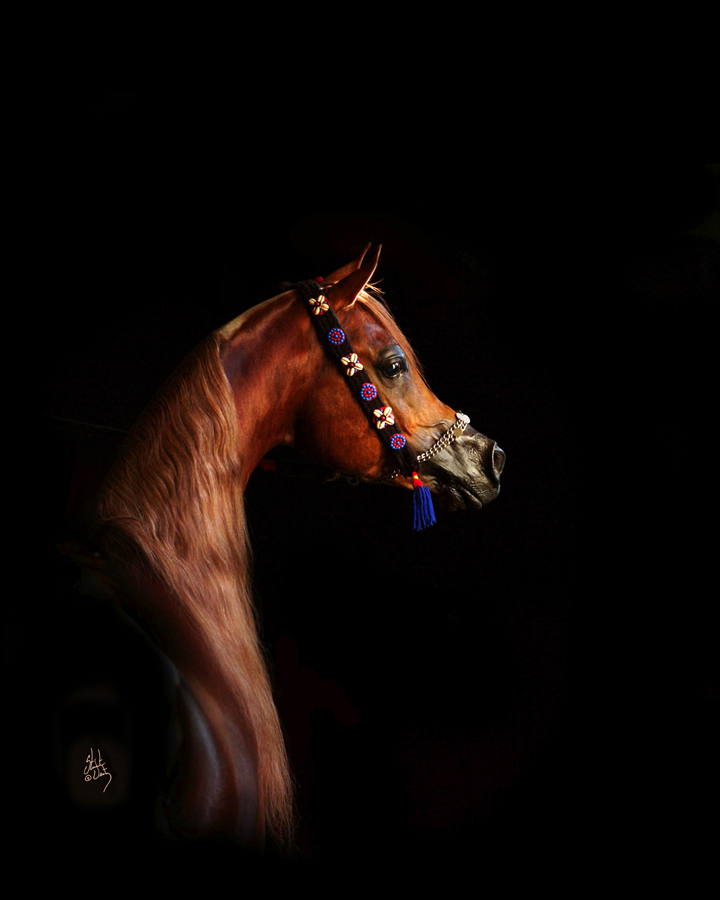 Magnum Psyche (Padrons Psyche x A Fancy Miracle) Arizona, USA
Magnum Psyche (Padrons Psyche x A Fancy Miracle) Arizona, USA
Just after this stallion was named U.S. National Champion Stallion for an unprecedented second time, I was asked to photograph him for the cover of Arabian Horse World. I had purchased my first digital camera only a year earlier and was still figuring things out. After the session I followed Magnum back into the barn and as he walked into the doorway a reflection from the wall on his right shined this incredible light on him. I asked the handler to turn him around and put him in that same spot. For the next few minutes I stretched my camera’s abilities to its limit because there wasn’t enough light on him to make a decent exposure. There was another photographer spectating and she kept saying, “This will never work.” I always accept those challenges! We all went into the house and I loaded the card onto to my computer. Photo after photo was too blurry or too dark … until I came to this one. It was perfect.
I really enjoy good horses of any breed doing what they do best.
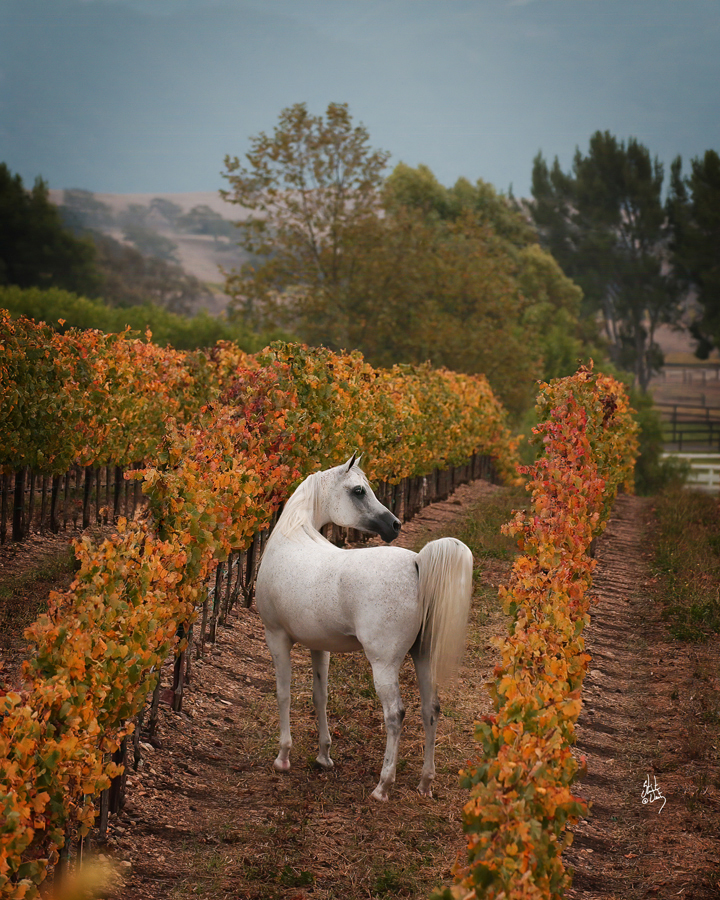 *El Dorada (*Sanadik El Shaklan x Emigrantka), California, USA
*El Dorada (*Sanadik El Shaklan x Emigrantka), California, USA
I photographed *El Dorada shortly after she arrived in the U.S. from Poland on lease to Manny Vierra, owner of Valley Oak Arabians. We trailered her off the farm for something a little more special. The session went well, but there was nothing extraordinary. As we were leaving, we noticed all the workers who had previously been in the vineyard were gone, so we figured it was worth the risk. I think it’s always easier to ask forgiveness than get permission! We picked a row that was pretty, checked the security of it, and sent someone to the far end to send her back if she decided to leave. She ran up and back a few times and then just stopped and looked off into the distance. We wrapped it up with an amazing photo and not a single grape leaf was disturbed in the process!
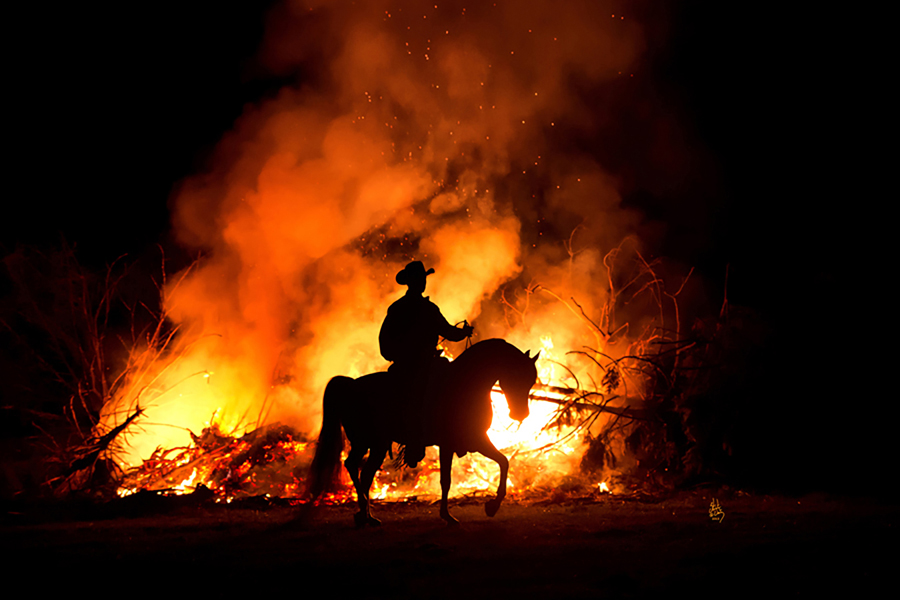 Zefyr (Sundance Kid V x Pattrice) and Jody Strand, Iowa, USA
Zefyr (Sundance Kid V x Pattrice) and Jody Strand, Iowa, USA
The Strand family are some of my oldest clients. After shooting on the same farm year after year, it can be difficult to keep things fresh. We would often wait for the sun to set and take a nice horse out into the field and get a cool silhouette shot, then follow it up by a fire pit with a cold beer and some embellished stories. Not sure if there was a sunset that night, but we took the fire pit to a whole new level. Cold beer and telling lies afterward didn’t change.
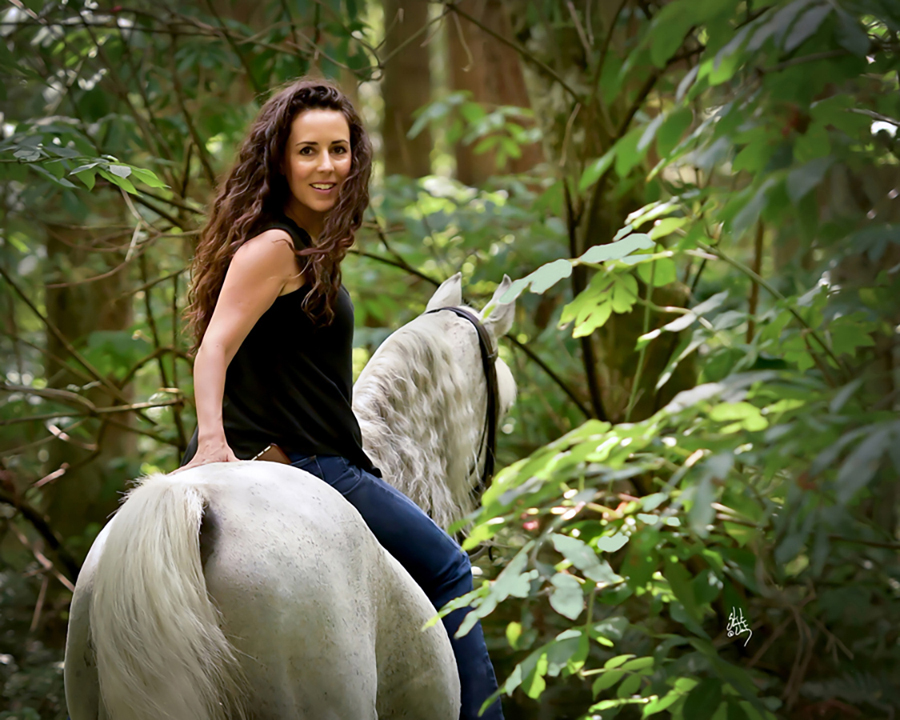 Rebecca and Apaladin (AA Apollo Bey x Amanda Of Aerie), Washington, USA
Rebecca and Apaladin (AA Apollo Bey x Amanda Of Aerie), Washington, USA
I took this photo in 2018 when Rebecca and I were dating. Apaladin is the horse that introduced the two of us nearly 20 years earlier when her family purchased him as a five-year-old. I was the first person to breed to him prior to their purchase, so being the owners of a new stallion, Rebecca and her mom Susan were understandably curious about my foal. Apaladin was a U.S. National Top Ten Halter Stallion and Top Ten English Pleasure, won his age group halter class at Scottsdale and was Liberty Champion twice. All of this after he had broken his leg. When he retired from showing, Rebecca and her mom would travel four hours roundtrip every Saturday to ride and spend time with Apaladin. When we were dating, I was living in Michigan and Rebecca in Washington state. When I flew out to visit, we’d always go see Apaladin and Rebecca would ride and I would walk along with her and take pictures on the trail. I have always loved this photo of the two of them, but it wasn’t until after she passed away that it took on an entirely different perspective. Rebecca’s dad said it best at her Celebration Of Life: “That picture is prophetic to me. We didn’t know at the time that she would die. It’s like she’s riding off somewhere, turns around to the rest of us and says …. I know where I’m going and it’s really good. You guys are going to be OK and I’m going to be there to greet you.”
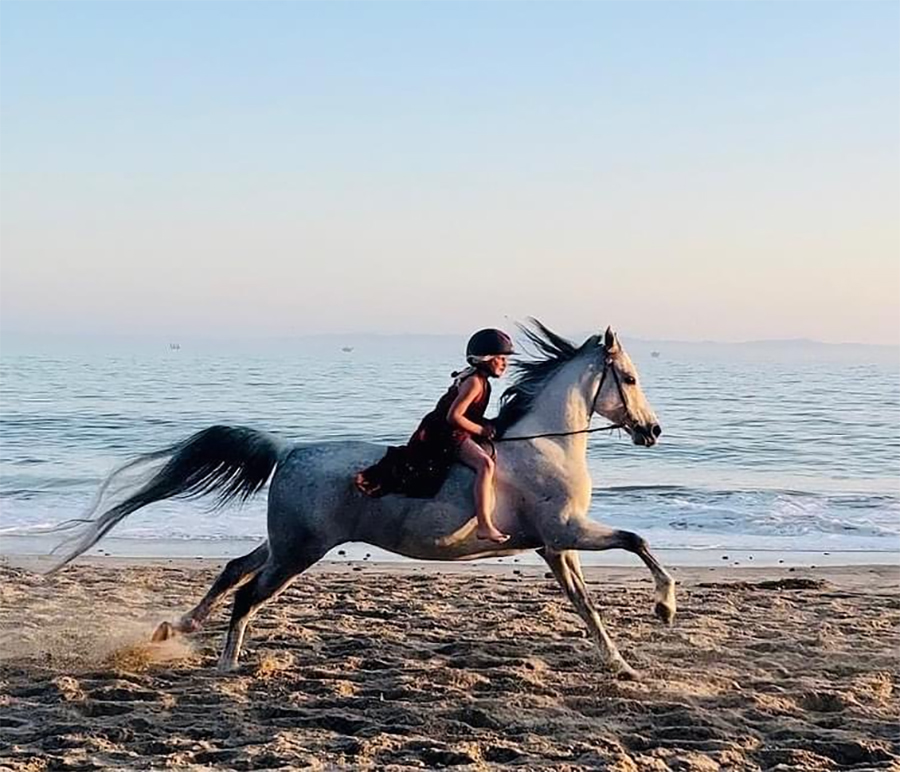 Appletini now lives at the Arabian Riding Academy in Santa Ynez, California. Here he gives one of the students the ride of a lifetime.
Appletini now lives at the Arabian Riding Academy in Santa Ynez, California. Here he gives one of the students the ride of a lifetime.
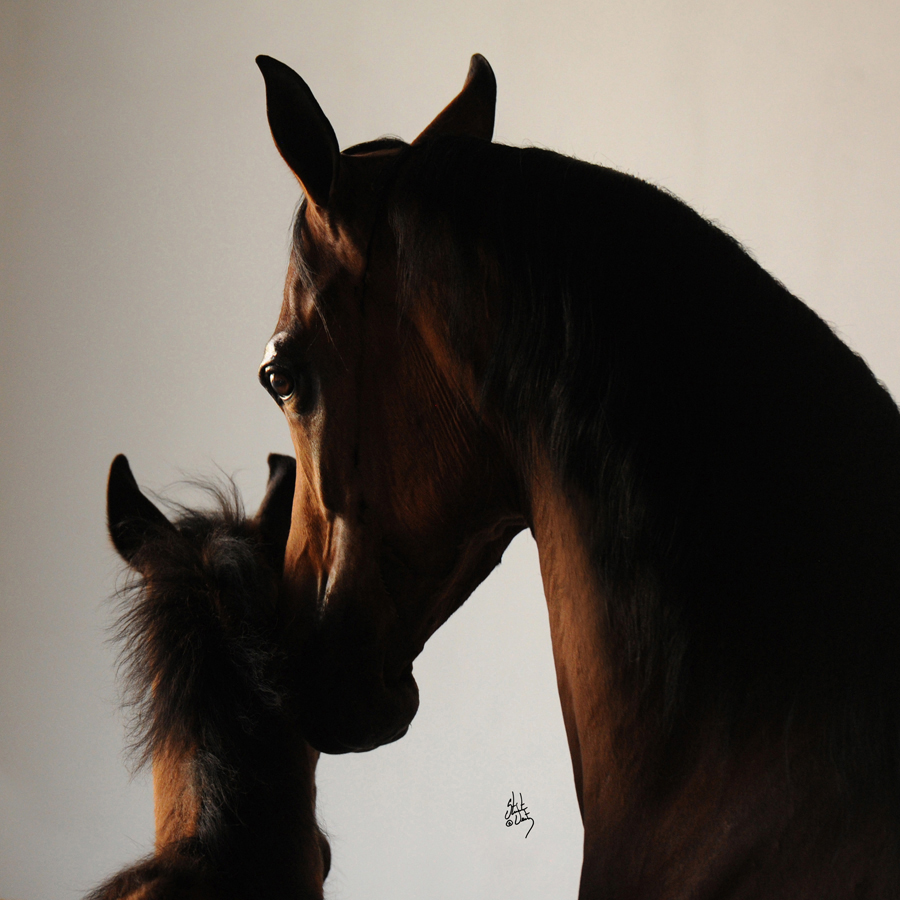 Eunora (*Gazal Al Shaqab x Eunika) and foal, Michałow Stud, Poland
Eunora (*Gazal Al Shaqab x Eunika) and foal, Michałow Stud, Poland
There really isn’t much that needs to be said here.
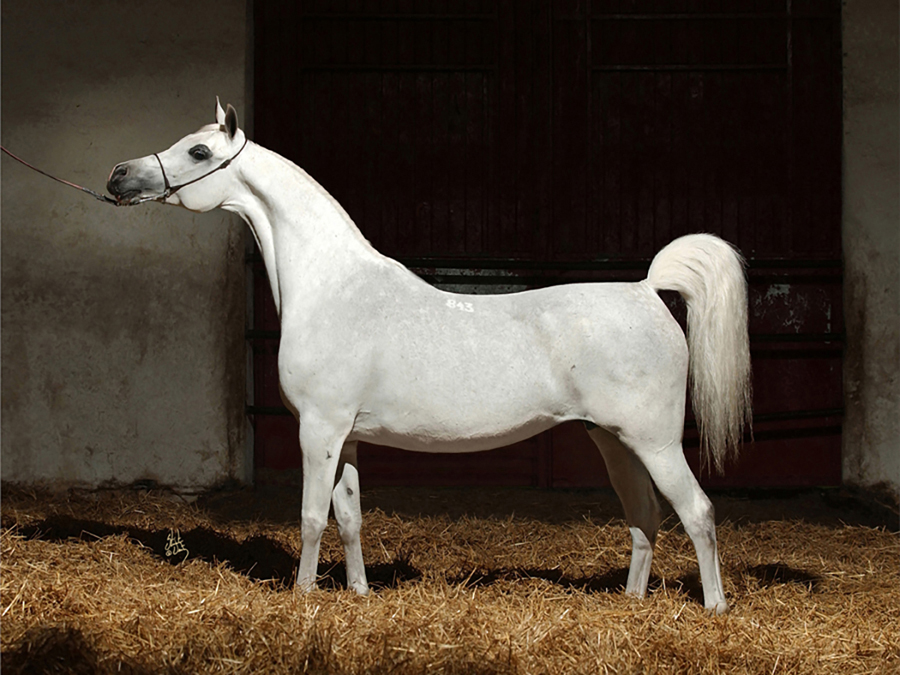 Elandra (Monogramm x *Erlanda), Michałow Stud, Poland
Elandra (Monogramm x *Erlanda), Michałow Stud, Poland
For 19 years I had the honor of photographing the catalog for Poland’s annual auction. In 2005 we saved Michałow’s most important mare for last, and unfortunately it began to rain. I set up a strobe light in one of the barns and took a few test shots to see if it was even worth bringing Elandra into the area, but what other choice did I have? She was led into position and immediately struck a perfect pose. There were people and things everywhere it seemed, so in a frantic Polish/English babble I chirped something and everyone scattered. This was the first shot I took. I think it’s reminiscent of an old world masters painting.
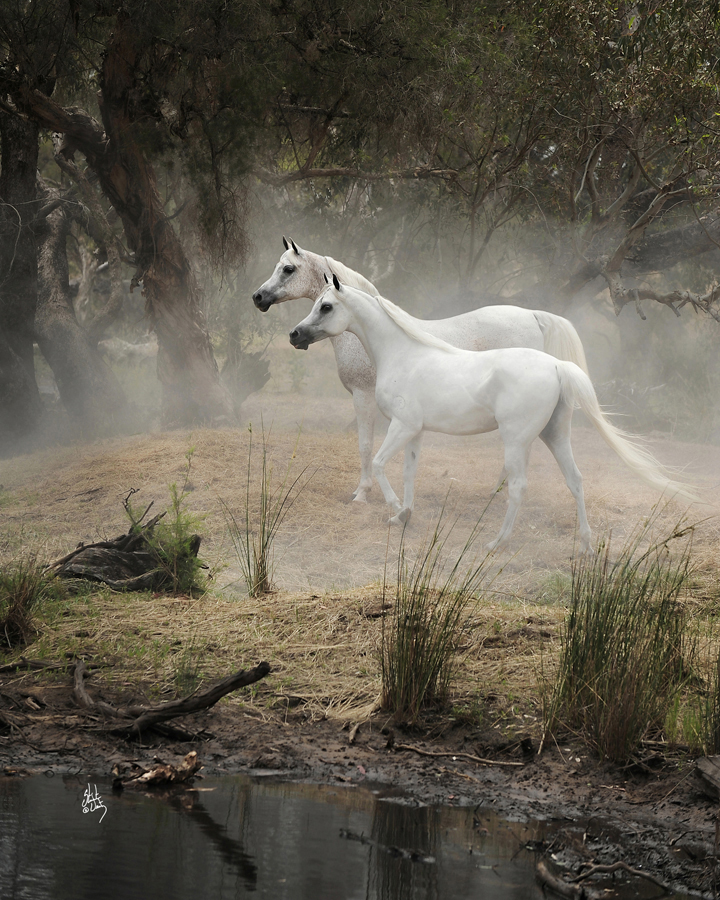 Shakla’s Silver Dream (SK Shakla Khan x Silver Glint) (foreground), and Windella Silver Shadow (Amir El Shaklan x Windella Silver Glitter), bred by Fairview Stud, and owned by Mystica, Australia.
Shakla’s Silver Dream (SK Shakla Khan x Silver Glint) (foreground), and Windella Silver Shadow (Amir El Shaklan x Windella Silver Glitter), bred by Fairview Stud, and owned by Mystica, Australia.
This was actually a tiny island surrounded by a little stream. I checked it out one evening and was told it might be nice in the morning with a little fog. The mares were walked through a few inches of water and turned loose. They wandered around for several minutes and then just began to graze. After they had settled in, someone ran off in the distance and they raised their heads to see. In these situations it is impossible to choreograph the results, so you just observe and enjoy.
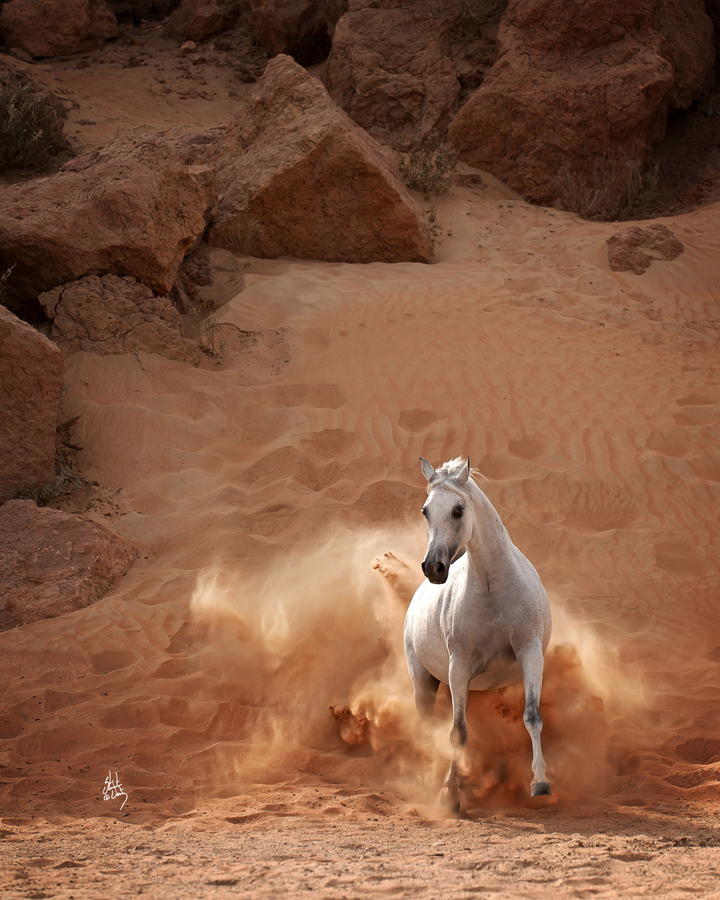 Lluminessa (Magnum Psyche x Lumiar Tamara), Dubai, UAE
Lluminessa (Magnum Psyche x Lumiar Tamara), Dubai, UAE
I have only photographed one time in Dubai, but there is something magical about the Arabian horse in the sand. For several days in a row we would haul horses to the desert and turn them loose. I have thousands of photos from then, but something about this photo keeps drawing me back. The light, the texture, the energy, the background…it all works for me.
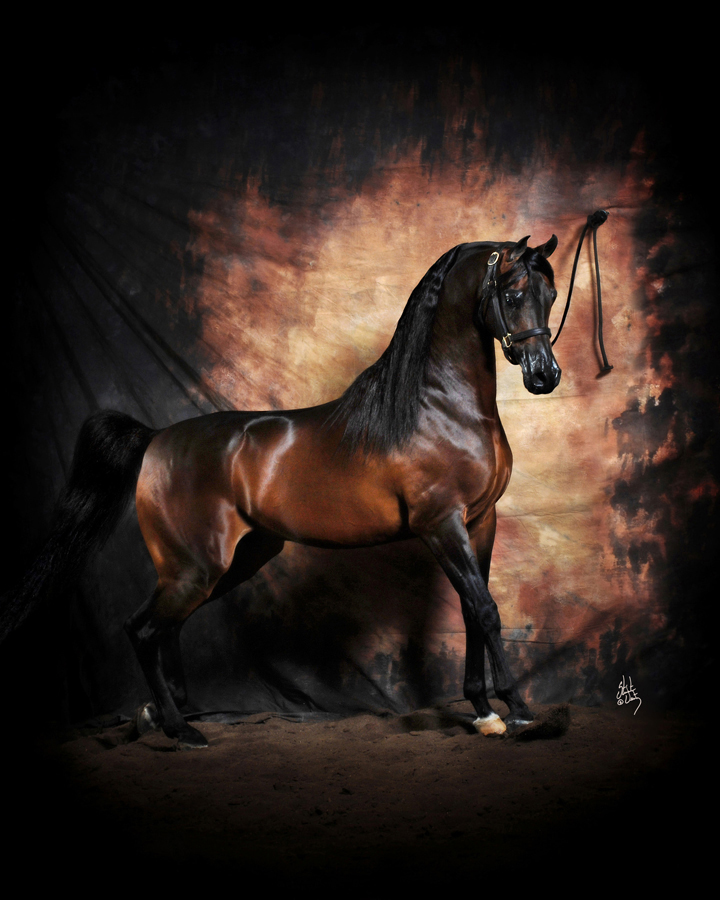 Pyro Thyme SA (Pryme Thyme x Holly Onfire JW) Wisconsin, USA
Pyro Thyme SA (Pryme Thyme x Holly Onfire JW) Wisconsin, USA
It’s winter in Wisconsin and it’s nearly 20 degrees below zero outside. I need to get a photo of this National Champion Stallion. I set up a back drop on the arena wall, and a couple lights and said “Let’s tie him to the wall and see what happens.”
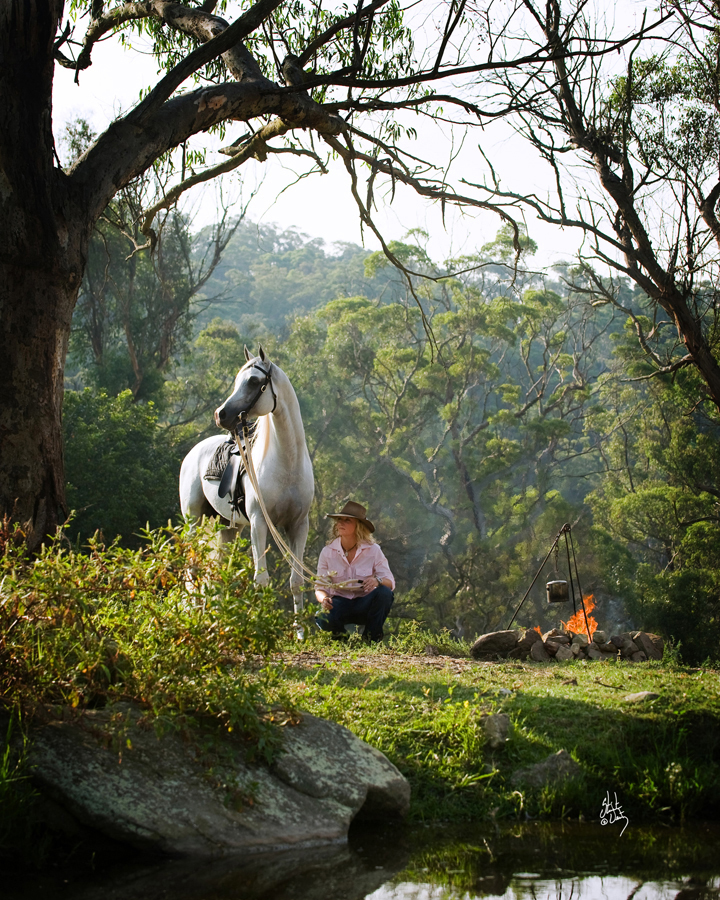 Klass (*TS Al Malik x Karmaa) and Daniella Dirks, Australia.
Klass (*TS Al Malik x Karmaa) and Daniella Dirks, Australia.
Klass is an Australian National Champion Stallion who has sired amazing foals for his breeders/owners Mulawa Arabian Stud. We wanted to do something very “Aussie” with him, so we staged an “outback” scene with a little campfire. To walk around the farm you would never see this spot as there are paddocks and fences everywhere. The bit of water in the foreground appears far bigger than it actually is, and there is a fence to the left, the right, and just over the hill behind them. This photo was taken in the only place I could be and still eliminate all the distractions. I believe a copy of this hangs in the Arabian Horse Museum at the Kentucky Horse Park depicting The Arabian Horse of Australia.
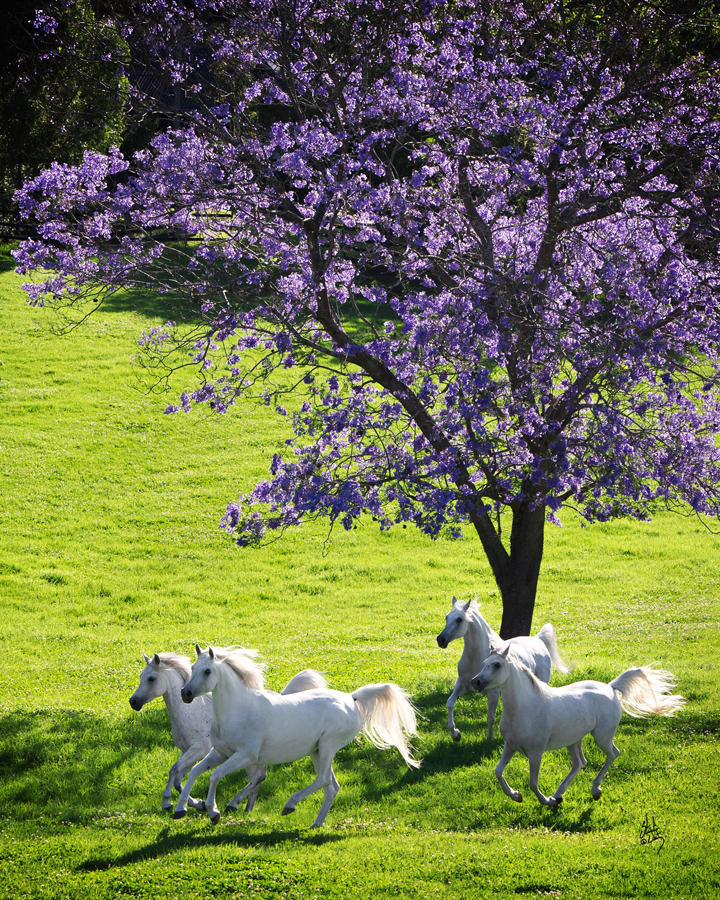 Mares of Simeon Stud, Australia.
Mares of Simeon Stud, Australia.
November in Australia is an amazing time of year, with the jacaranda trees in full bloom. Just beautiful! I wanted to incorporate this amazing tree with Simeon’s beautiful grey mares, but there wasn’t any place on the property that looked like it would work. Marion Richmond was having a little work done to her house at the top of the hill and told me to follow her. A little climb up a ladder and there it was. I stood on the roof of her house and they turned the mares free. I think there were six mares in that field, but two of them had their own ideas and didn’t really feel like being in my picture.
 Foal with tail over face
Foal with tail over face
This photo just makes me smile.
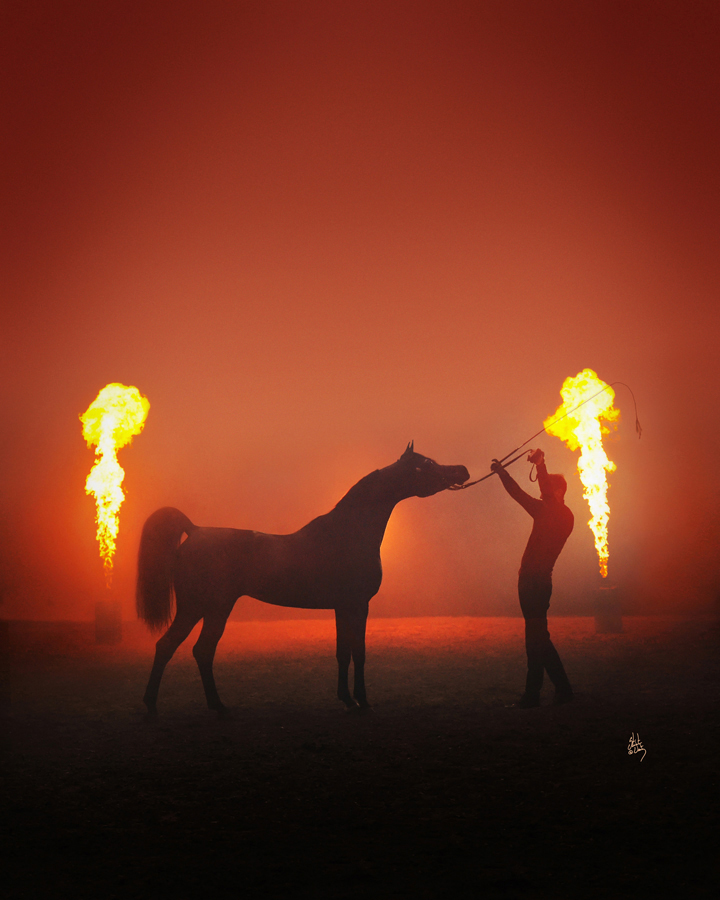 Sultan Al Zobara (*Gazal Al Shaqab x Inra Al Shaqab), Belgium
Sultan Al Zobara (*Gazal Al Shaqab x Inra Al Shaqab), Belgium
This was a fun session. Hilke DeBruycker rented some stadium-sized flame throwers that no one knew how to operate. Joe Rose, Tom Oben, Hilke and I all joked that if we could ever get the flames to work, there was a distinct possibility the barn might burn down! The first time it actually worked it scared the crap out of all of us. The flame was huge, it was loud and it was HOT. Sultan was a true professional and wasn’t at all shaken by the situation.
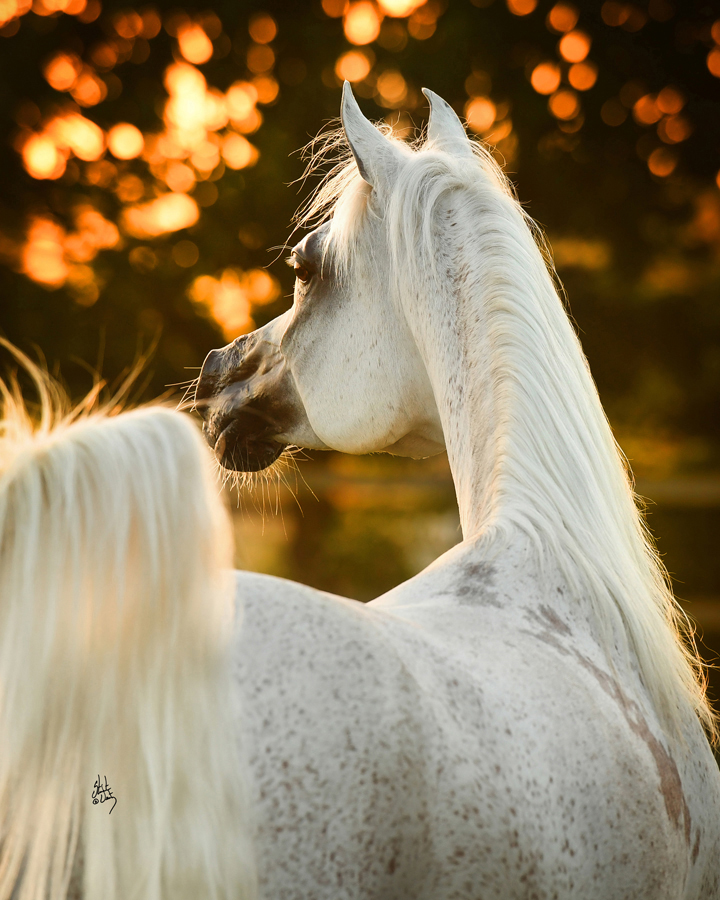 Anood Al Nasser (Ashhal Al Rayyan x Aleysha Al Nasser), Belgium
Anood Al Nasser (Ashhal Al Rayyan x Aleysha Al Nasser), Belgium
A beautiful fleabitten grey mare with a "bloody shoulder" at sunrise. Does it get any better?Nothing special about this session except the quality of the mare. A few months later she was named World Champion Mare at the Salon du Cheval.
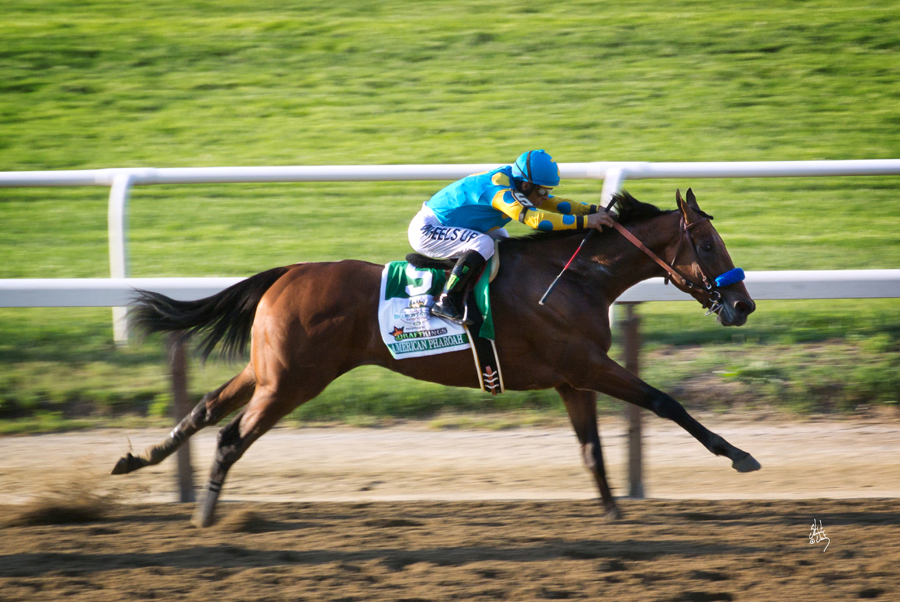 American Pharaoh (Pioneer Of The Nile x Little Princess Emma), winner of the 2015 Belmont Race, New York, USA
American Pharaoh (Pioneer Of The Nile x Little Princess Emma), winner of the 2015 Belmont Race, New York, USA
In 2014 I went to the Belmont Race with a bunch of friends in hopes of seeing history be made when California Chrome becomes the first horse to win the Triple Crown in 36 years. He didn’t win. The following year American Pharaoh was primed to do the same thing, and all those same friends bought their tickets with the hope of witnessing history in the making. I wasn’t as optimistic and scheduled a photo session on the other end of the country. The night before the race something felt weird and I knew if American Pharaoh won, and I wasn’t there, I would regret it forever. I called my job out West and asked if there was a chance we could push the session back a couple days. No problem at all! I booked a flight for the next morning and somehow there was a seat in the grandstands for sale online that was right there with my people. I arrived at the hotel as my friends were leaving to go to the track. I smuggled a very small camera into the stands and shot this as American Pharaoh blew by our seats. It was the most exhilarating environment I’ve ever experienced.
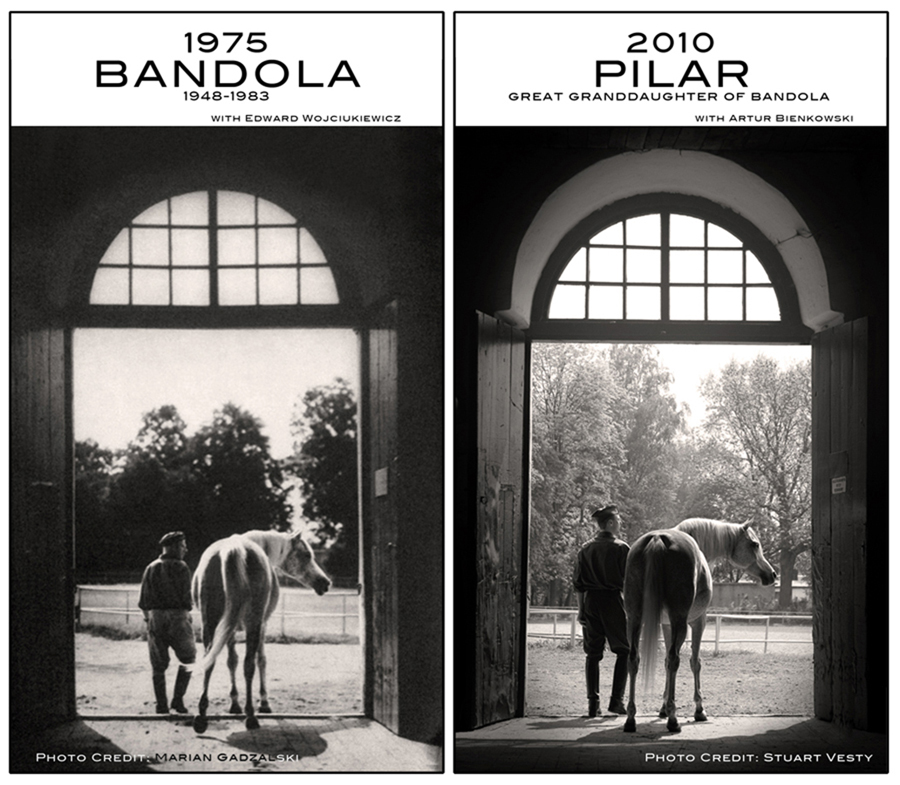 Bandola (*Witraz x Balalajka) and Pilar (Fawor x Pipi), Janów Podlaski, Poland
Bandola (*Witraz x Balalajka) and Pilar (Fawor x Pipi), Janów Podlaski, Poland
One of my favorite projects in college was to recreate a magazine ad as best you could. One of my favorite photos from Poland was of Bandola with her groom taken by Marian Gadzalski in 1975. Thirty-five years later, when Bandola’s great-granddaughter Pilar was offered in the sale, I thought there was no better time to give that concept another try.
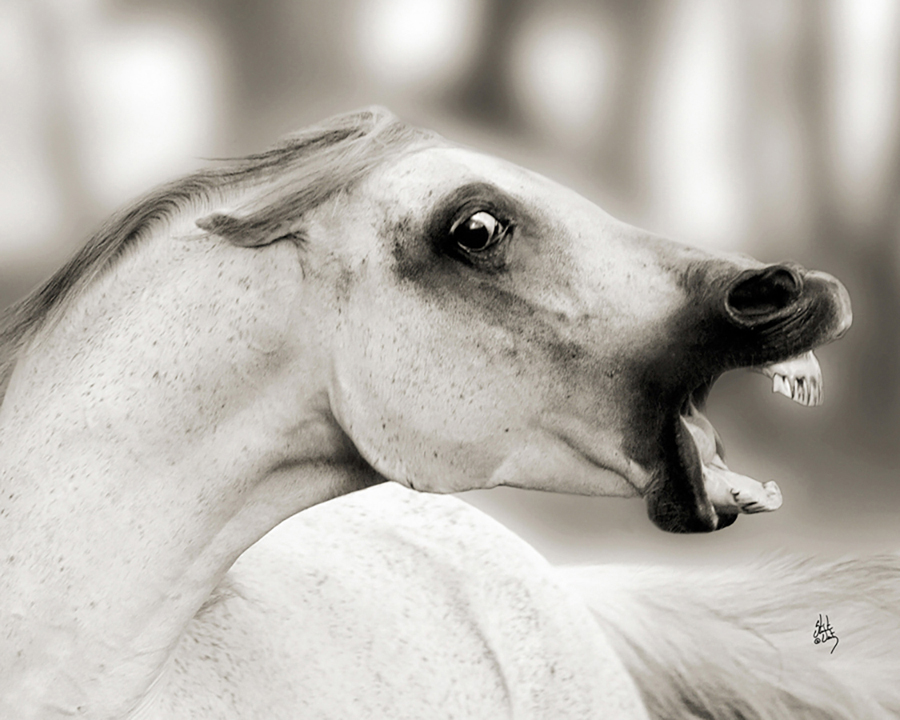 “Dominance,” Janów Podlaski Stud, Poland
“Dominance,” Janów Podlaski Stud, Poland
This is the result of a good idea gone wrong. My initial vision of a group of beautiful mares together was immediately changed when a mother’s hormones took flight. This photo seems to remind everyone of something or someone they know!
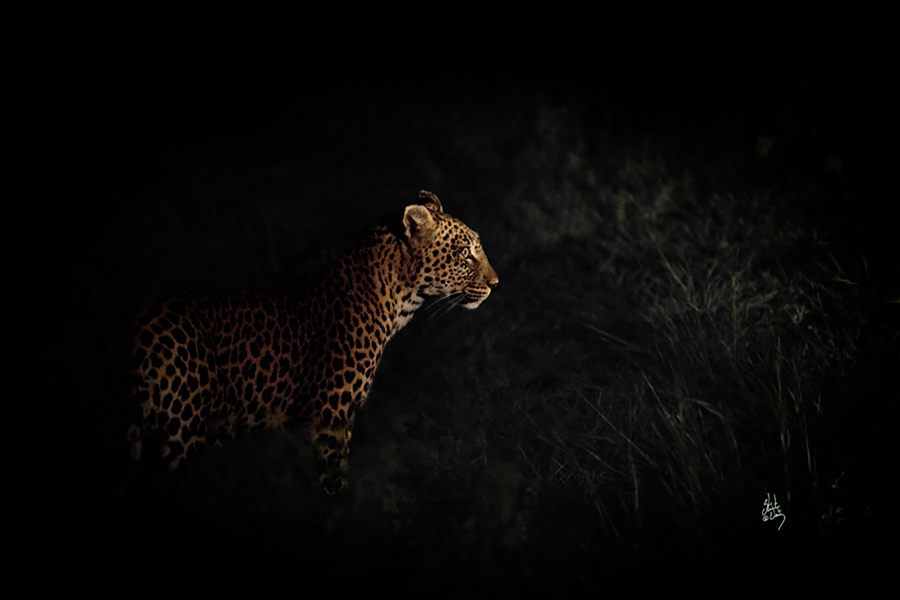 Female Leopard, Kruger Park, South Africa.
Female Leopard, Kruger Park, South Africa.
As we headed out on my first morning in Kruger, something off in the distance walked into the beam of our headlight. The driver wasn’t sure what it was, so we slowly approached it and hoped we could get a better look. It was a leopard cub. Then we saw HER. His mom casually walked out of the brush. Our driver shined a flashlight in her direction so we could get a better view and I was able to get this photo. Leopards are very elusive, and some people never see one. This amazing lady started my day right!
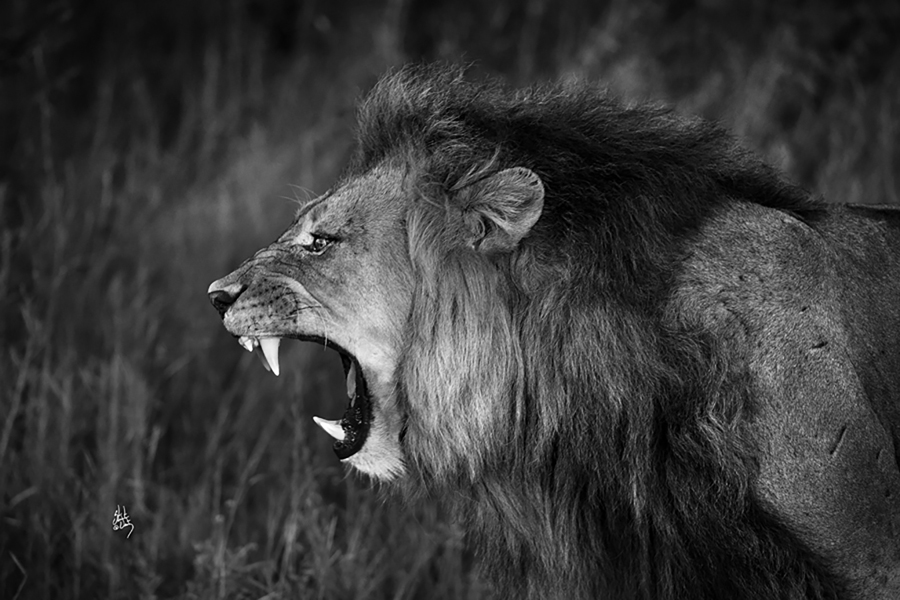 Male Lion, Kruger Park, South Africa
Male Lion, Kruger Park, South Africa
This was my second visit to Kruger and I hadn’t seen any lions on my first trip. I asked the safari guide if there was a chance we could find some and he said they were sighted an hour away and we would need to leave an hour earlier in the morning if we wanted to see them. This meant leaving at 4 a.m. in order to get there prior to sunrise. No one else in the camp was interested in leaving that early and driving that far. The sun hadn’t even risen when we came across this guy. He was so close I could have touched him if I felt lucky, but in order to get this photo I had to get as far to the other side of the vehicle as possible. He was SO beautiful.
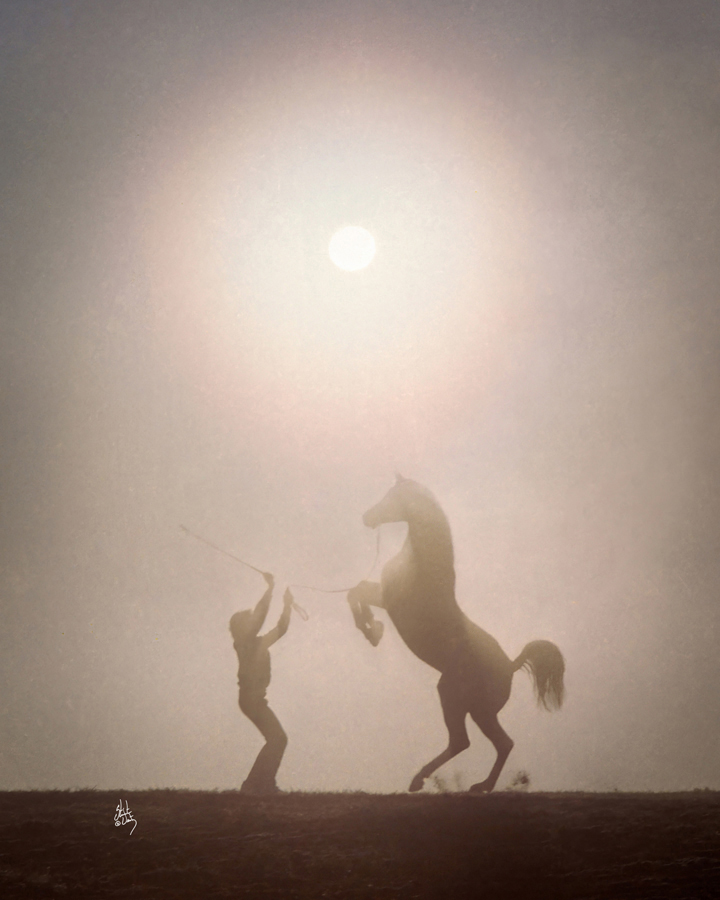 *Padron (Patron x Odessa), Minnesota, USA
*Padron (Patron x Odessa), Minnesota, USA
After college I moved to Minnesota and worked at Midwest Training Centre as a groom. I had the opportunity to photograph many nice horses, but *Padron wasn’t one of them. One afternoon I saw him leaving his barn all cleaned up and I knew there was a photo session about to happen. I grabbed my camera and followed him out to the front pasture. It was Judith’s session, but I didn’t care, it was *Padron and I wanted to get a photo of him. They turned him loose, he reared up and I took a photo. Judith heard my camera, turned around and politely told me to get my own photo session! I walked away with my tail between my legs. David told me *Padron would be ready at sunrise if I wanted my own session, so the next morning we made our way out into the fog.
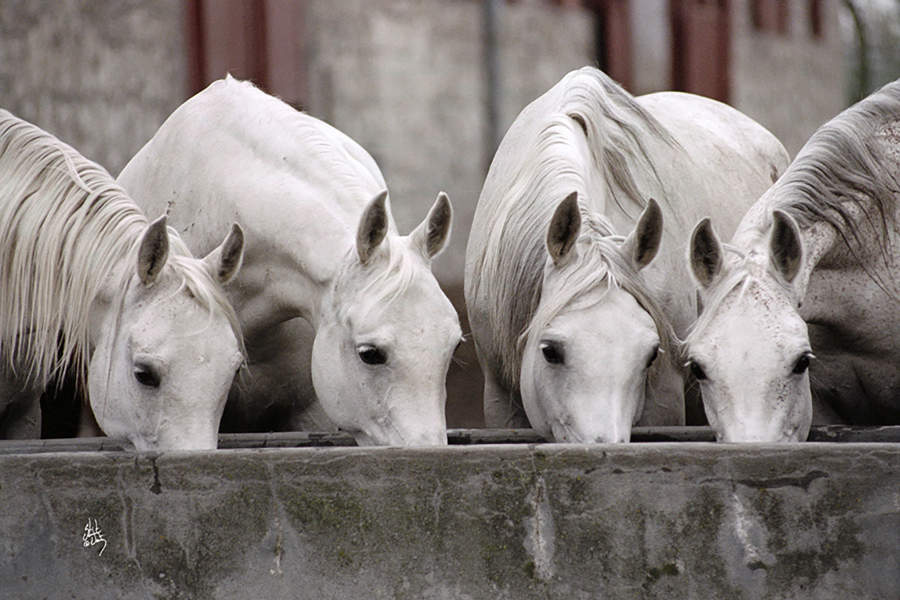 “Sisters," Michałow Stud, Poland
“Sisters," Michałow Stud, Poland
My first trip to Poland was in 1997. The first morning after I arrived at Michałow I was given a tour of the farm so I could get an idea of possible photo sites. The farm was rolling as normal and the mares that weren’t being photographed were let out into the courtyard of the stable to get a drink before they headed to their field for the day. These four grey mares lined up in a way that I never saw again in the dozens of times I visited.
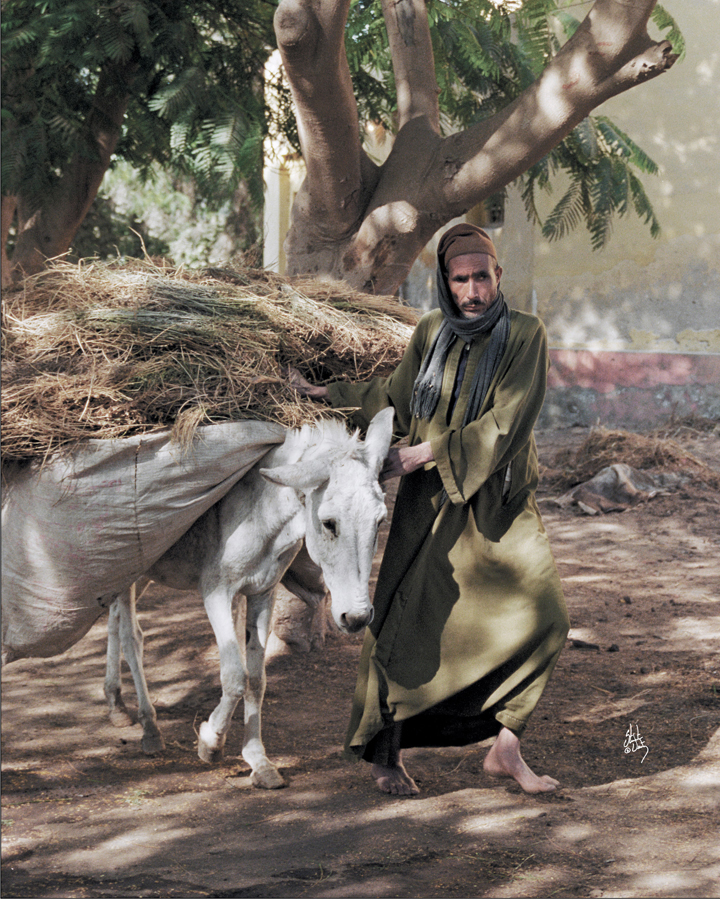 "Somewhere in Time,” Egypt
"Somewhere in Time,” Egypt
I can’t remember when this was taken, maybe the late ’80s. I was on assignment in Egypt shooting editorial photos for the Arabian Horse Times. After the horse show at the EAO, we visited a few local farms. We parked the car and as I grabbed my camera out of the case I turned around and saw this. It literally stopped me in my tracks and I felt like I had stepped back into biblical times. I grabbed one shot and ran off to catch the rest of my people. I didn’t know what I had until a week later when I returned home and developed the film.
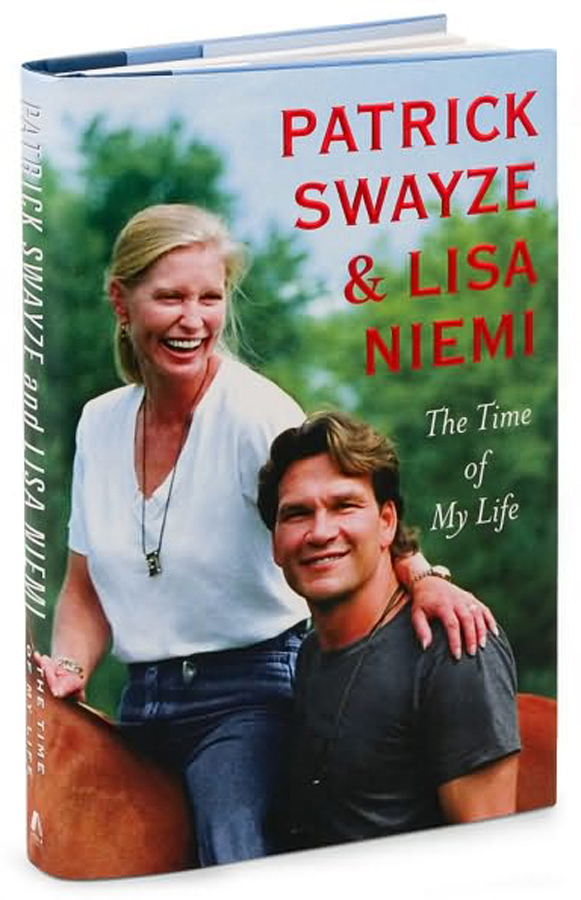 Patrick Swayze book cover
Patrick Swayze book cover
This photo was taken in 1997, several years before this book was published. Patrick was a fantastic guy and always had time to stop and talk to his fans. We were at the Egyptian Event in Kentucky and “Buddy” (as his friends called him) was on crutches after breaking his leg on a movie set. It took him 45 minutes to get to the area we had chosen for the photo because no one would leave him alone, and he didn’t mind. Of the thousands of photos taken of Patrick and Lisa, I was honored that they chose mine for the cover. The photo wrapped around the cover and the horse’s head and neck is on the back.
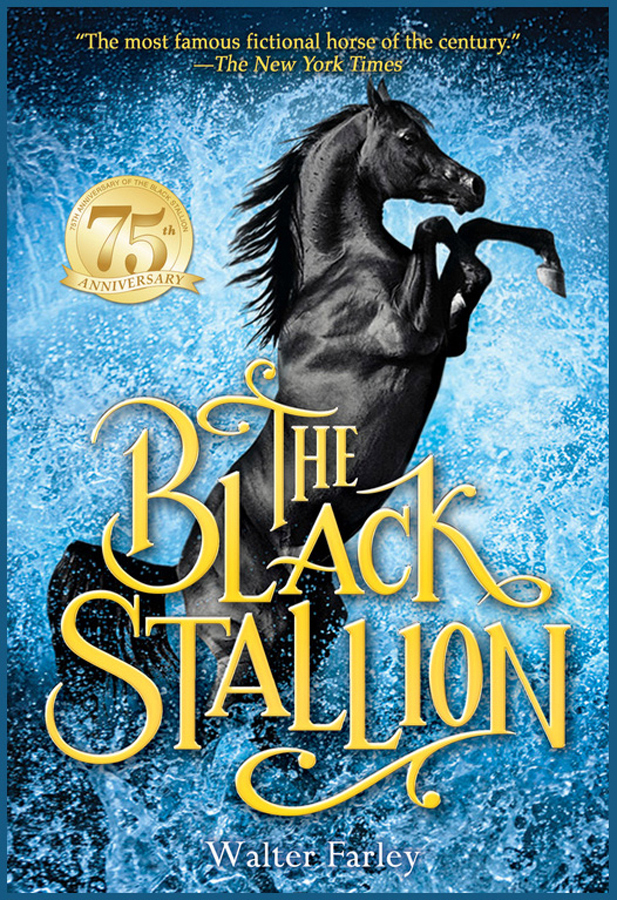 “The Black Stallion” book cover; the 75th anniversary edition.
“The Black Stallion” book cover; the 75th anniversary edition.
When listing iconic books for Arabian horse lovers, “The Black Stallion” is unquestionably among the leaders. Random House contacted me and asked if I had anything suitable for the 75th anniversary publication of the book. I feverishly looked through my archives and presented them with a few options. They settled on this and said they would have their graphic department remove and replace the background. That’s fine by me - the check was substantial!
As a side note, when I’m asked who the horse in the photo is my response is always “It’s The Black Stallion! The most famous fictional horse of the 20th century.” Well, it is!
On another side note, when I was in 8th grade there was a small ad in the back of Arabian Horse World looking for someone to portray Alec Ramsey in the upcoming Black Stallion movie. My mother sent in my photo and a short bio, but it was two or three years later before they finally responded. I was invited to Vic Ramos’ casting studio in New York City for an audition, but I had grown so much in those years that I wasn’t even slightly eligible for the lead role anymore. I’m not sure I would have been able to handle that kind of fame, but it would have been fun trying!
 Sea Hero (Polish Navy x Glowing Tribute), 1993 Kentucky Derby winner, Kentucky, USA)
Sea Hero (Polish Navy x Glowing Tribute), 1993 Kentucky Derby winner, Kentucky, USA)
When I lived in Kentucky for several years in the early ’90s, I let people know that when they were scheduling their photo sessions, the first Saturday in May was always booked. This particular Saturday also happened to be my birthday. My mom wanted to know what I wanted for my birthday and I told her I wanted her to join me at the Derby. She travelled from New York to Kentucky with my brother and we had plans to spend an awesome day together. The morning of the race I got a call from a friend who worked for Sports Illustrated. He said his assistant was sick and he had an extra press pass /track access pass if I wanted it. I asked what he needed me to do for him and he said “Nothing – just enjoy yourself.” It was very cool to be that close to the action! My mom and brother had a great time too, regardless of me completely ignoring them.


